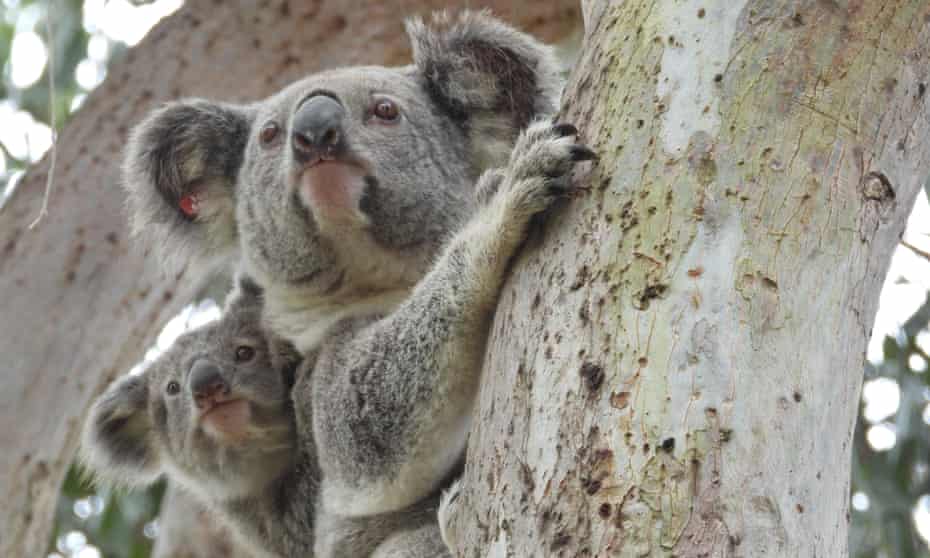Extract from The Guardian
For 10 years successive Australian governments have known the world famous species is in trouble, but neglected to do something about it.

It’s happened. Australia’s globally famous animal, the koala, is officially listed as endangered – a decision both long expected and completely preventable.
It’s important to say this upfront.
Our national list of threatened species is updated regularly. New plants, animals and habitats are added, upgraded, sometimes downgraded, depending on the conservation urgency.

Most of the time this happens quietly. But when the animal is the koala, people notice and it can prompt the question: how did we get here?
Writing about the environment, I’ve got used to hearing the refrain that extinction is a choice. Or rather it’s a thousand choices – small and large – that lead to cumulative impacts of the kind we have seen this week.
The koala populations of Queensland, New South Wales and the Australian Capital Territory, first listed under national law as vulnerable in 2012, have suffered further decline and must now be considered endangered, a rung closer to extinction.
This is the right decision by the environment minister, Sussan Ley. It’s based on independent scientific advice and follows years of agitation by environment and community groups about the species’ plight.
That plight gained fresh urgency in the aftermath of an unprecedented fire disaster that tore through habitat already under pressure from mining, property development, roads and agriculture.
The Australian Conservation Foundation calculated this week that in the 10 years since the former environment minister Tony Burke listed the koala as vulnerable, federal governments alone have approved 25,000 hectares of clearing of koala habitat.
One development, Pembroke’s Olive Downs coking coal mine near Moranbah in Queensland, was approved in 2020 for almost 6,000 hectares of clearing.
In July last year, the resources minister, Keith Pitt, announced that same project would receive a $175m loan from the government’s northern Australia infrastructure facility for its first stage.
It’s a sum worth considering next to the $50m the prime minister, Scott Morrison, announced for koala protection only two weeks ago.
In the 10 years in which we have known a much-loved species is in trouble, Australian governments of all levels have neglected their responsibility to do something about it.
A species recovery plan was delivered to Ley at the end of last year.
She plans to adopt it, but it was identified as a necessity a decade ago. We’ve had five other environment ministers in that time, any one of whom could have made it a priority.
In NSW, the very policies that led to a near implosion of the state government in 2020 are unfinalised, despite the Coalition heralding that a compromise had been reached.
In both Queensland and NSW, clearing of habitat continues to increase.
Right now, clearing of connecting habitat for southern Sydney’s koala population is occurring for a housing development near Campbelltown.
And there has been no thorough response to the recommendations of Graeme Samuel’s review of national environment laws, which found successive governments have failed to protect Australia’s wildlife.
The stronger national listing for the koala is recognition of that failure.
It’s also an opportunity to do better. This can be turned around and governments know what the solutions are, starting with a commitment to taking the protection of important habitat and nature corridors seriously.
If it can’t be done for the koala, then what hope is there for the almost 2,000 other species and habitats on the threatened list?
No comments:
Post a Comment